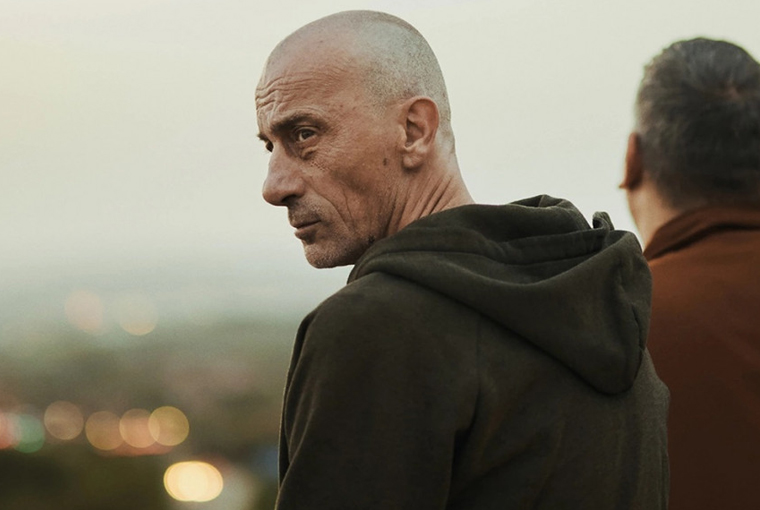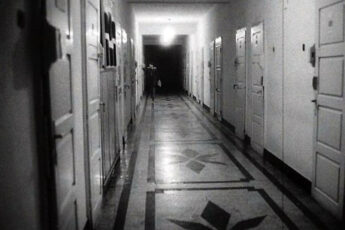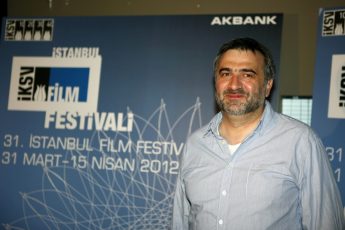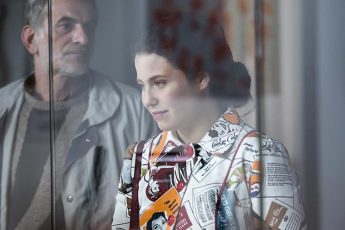“Border Thinking” Through Film
Tonislav Hristov’s The Good Driver (2022)
Vol. 130 (December 2022) by Ana Grgić and Antonis Lagarias
All of us suffer from the illusion that we can depart our old, squalid harbors with their stagnant garbage water for a place far, far away, where bright horizons of space are open to us and where everything is crystal clear and sunny. All of us like to believe there exists such a serene land, where we might put ashore and cleanse ourselves of our life’s fogs and burdens. In our sad age fraught with political troubles, Europeans delude themselves with the romantic yearnings for unknown tropical lands, as if India today were not a political penitentiary, an industrialized prison, like Europe.
– Miroslav Krleža, Journey to Russia (1925)
The de-colonial epistemic shift, grounded in border thinking, aims at processes of de-colonizing of knowledge and being. De-colonizing being and knowledge is a way toward the idea that ‘another world is possible’ (and not alternative modernities).
– Walter Mignolo and Madina V. Tlostanova1
An idyllic landscape somewhere in the godforsaken countryside. Four boys play football in an overgrown field, while a funeral rite proceeds solemnly in the background. The opening of Tonislav Hristov’s The Good Driver brings us back, obstinately, to the “European” periphery and the forgotten village of Golyam Dervent near the Bulgarian-Turkish border. With a number of documentaries under his belt, which have travelled well on the international film festival circuit, The Good Driver is Hristov’s first fiction feature, which centers on the story of Ivan, a taxi driver living between the village of Golyam Dervent and the Golden Sands seaside resort. We watch Ivan slowly save money in order to return to Finland, where he used to live with his ex-wife Mia and son Antti, and make amends for his past mistakes. Golyam Dervent is a familiar place for Hristov since it was also the setting of his earlier documentary The Good Postman (2016), which tells the story of a local postman, Ivan Fransuzov, who decides to run for mayor with the aim of making the dying village come alive by welcoming refugees that sneak across the Turkish-Bulgarian border at night. Hristov’s new film furthers the themes of intra- and extra-European migration by questioning the existential state of a person who crosses borders as well as the value of community bonds, friendship, and solidarity with the “other”.
Mobility within the European continent, from the “periphery” and down south to the “center” and up north, has been a common choice for people facing financial hardship and seeking a “better” future in a more “prosperous” country. It is hardly surprising that this type of intra-European mobility, also referred to as labor export, disproportionately concerns the countries of the Balkan Peninsula, many of whose working-age citizens currently live abroad.2 In some ways echoing the director’s own story, who studied and lived in Finland for a number of years, The Good Driver touches upon the thorny issue of identity in this multicultural and multinational Europe. Eastern European and Balkan migrants in Western Europe are still marginalized and considered as European “others”, with the myth of the European dream appearing to dissipate day by day against the backdrop of ever-increasing imaginal, political, and physical borders.
Though not visible on the screen, it is clear that as a Bulgarian, protagonist Ivan (Malin Krastev) was “othered” in Finland as a member of the lower working class of economic migrants from Eastern Europe. Moreover, he fails to achieve the European dream in Finland, losing a business and his family, and returns to his mother’s village in rural Bulgaria, where he also struggles to make a living, first as a taxi driver for drunk Western European tourists on the Black Sea side, and then as a driver illegally smuggling refugees and asylum seekers across the Turkish border. Throughout the film, Ivan desperately tries to maintain a link to his Finnish family, and he describes his sole purpose as gathering enough money to go back and “make things right”. To this end, he does not hesitate to ask for the assistance of corrupted officials, just like the rest of the characters of Golyam Dervent, many of whom are forced to engage in illegal activities in order to survive. Their marginality and precarity is apparent in their surroundings, their dwellings and their being stuck in the world which surrounds them.
Ivan is far from perfect. The film’s title ironically alludes to the decisions we must make and the grey line that separates what is good from what is not. However, despite appearances, Ivan’s most pressing problem is not financial. Having failed in achieving his European dream, Ivan is uncertain of his place in the world, and his experience of everyday life resembles that of a displaced person living in-between two worlds. Hardly surprisingly, even when he manages to raise enough money, he returns to a now-alien Finland, a country that no longer has a place for him. In this way, the director alludes to perhaps the darkest consequence of this kind of mobility: losing one’s sense of belonging. This feeling is precisely what allows Ivan to connect, if only briefly, with the passing refugees. Hristov frames this connection as a series of “taxi portraits”, images of different passengers that imprint themselves on Ivan’s (and the viewers’) memory as he drives them across the border. Because the actors are real-life refugees, this film sequence carries a sense of authenticity and underscores Ivan’s complex position. His connection to the refugees is fleeting and contradictory, as he both enables their passage and exploits the fragility of their condition. At the same time, he shares a sense of being in constant transit and having lost one’s home with them.
In this way the film seems to reflect on the hypocrisy and double standards of Western (and hegemonic) European Union nations and their politics. Take Austria and Netherlands’ decision to veto the inclusion of Romania and Bulgaria in the EU border-free zone, citing illegal migration as the key reason for their stance.3 Meanwhile, Croatia, which joined the EU in 2013, six years later than Romania and Bulgaria, will be admitted to the Schengen zone starting from 1 January 2023, causing dissatisfaction among its Balkan neighbors, who consider this to be a political decision. Therefore, the so-called “refugee crisis” and intra-European economic migration are officially linked and remain at the forefront of EU’s major areas of concern and political polarization, where the right-wing populist parties, which have increasingly been on the rise throughout Europe, continue to instrumentalize the question of migration to attract anti-immigrant votes in their respective countries. In opposition to the above, the director foregrounds the (sought-after) feeling of belonging in the solidarity and humanity of small communities left to their own devices. These are aspects made particularly evident through scenes in which this togetherness and connectedness emerges through games of football or collective celebrations. These scenes differ somewhat from the rest. They are filmed with particular care to appear as moments where the narrative action falters to allow the film to “breathe”. In this sense, they are also characterized by a sense of authenticity, as they are less a fictional invention than the result of the director’s long-term observation and his personal ties to the specific community.
Through main character Ivan and his life story, but also through the portraits of refugees and asylum seekers who risk their lives to undertake the perilous journey of border-crossing in order to flee from war and seek a better life elsewhere, the film exposes different geographic, political, cultural and epistemic borders. From this perspective, we could argue that The Good Driver engages in “border thinking” through film, inasmuch it is a cinematic “response to the violence (frontiers) of imperial/territorial epistemology and the rhetoric of modernity” which is based on a rhetoric of inferiority and the Other that rationalizes oppression, exploitation and the eradication of differences.4 Aside from exposing the array of borders we continue to face in contemporary Europe, the film could be said to engage in the process of de-colonizing knowledge and reality through its attempt to present a local (hi)story, and a pluri-versality of the border situation. On the one hand, the film addresses the marginalization and othering of a rural community in South-East Bulgaria within the wider European political, economic, and cultural reality. On the other, it depicts how people are driven to engage in illegal activities such as human trafficking given the community’s dire economic state. These actions are not depicted in a tone of moral superiority. Rather, though the protagonist Ivan engages in such illegal activities for financial gain, he seems to ultimately care about the fate of the migrants. In a way, the two conditions, that of the Syrian refugee and of the Bulgarian economic migrant, of being in-between, of displacement, of suffering from the permanent state of transit, of embodying the other, seem to be leveled out by contemporary postcolonial realities. Does the film suggest that it is their shared experience and mutual solidarity that could form the basis for an alternative to the disastrous current migration policies and the illusory dream of European mobility?
References
- 1.Walter D. Mignolo; Madina V. Tlostanova (2006). “Theorizing from the Borders: Shifting to Geo and Body-Politics of Knowledge”. In: European Journal of Social Theory 9, 205-221; 219.
- 2.See for instance Martin Dimitrov’s analysis on Balkan Insight: https://balkaninsight.com/2018/05/29/romanians-croatians-bulgarians-among-the-top-senders-of-working-age-population-in-eu-05-29-2018/ [accessed on 11 December 2022].
- 3.`Schengen: No EU border-free zone for Romania and Bulgaria’. https://www.bbc.com/news/world-europe-63905113 [accessed on 11/12/2022].
- 4.Mignolo, Tlostanova (2006), 206.




Leave a Comment